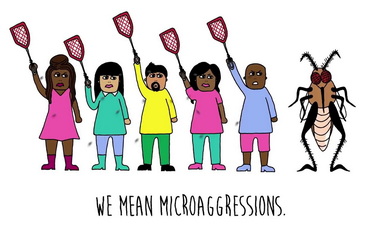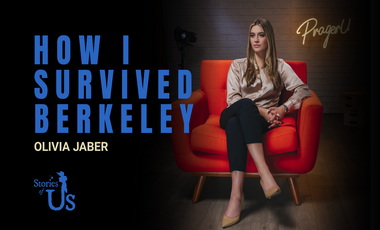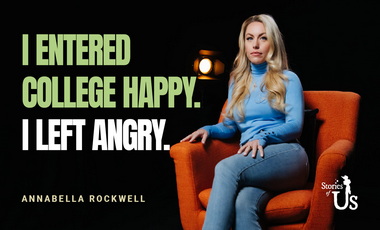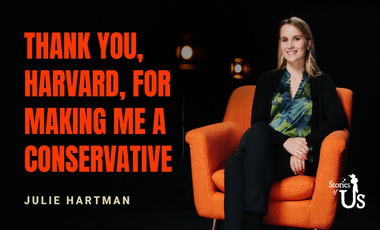INTRODUCTION
This is another book about the dissolution of the West. I attempt two things not commonly found in the growing literature of this subject. First, I present an account of that decline based not on analogy but on deduction. It is here the assumption that the world is intelligible and that man is free and that those consequences we are now expiating are the product not of biological or other necessity but of unintelligent choice. Second, I go so far as to propound, if not a whole solution, at least the beginning of one, in the belief that man should not follow a scientific analysis with a plea of moral impotence.
In considering the world to which these matters are addressed, I have been chiefly impressed by the difficulty of getting certain initial facts admitted. This difficulty is due in part to the widely prevailing Whig theory of history, with its belief that the most advanced point in time represents the point of highest development, aided no doubt by theories of evolution which suggest to the uncritical a kind of necessary passage from simple to complex. Yet the real trouble is found to lie deeper than this. It is the appalling problem, when one comes to actual cases, of getting men to distinguish between better and worse. Are people today provided with a sufficiently rational scale of values to attach these predicates with intelligence? There is ground for declaring that modern man has become a moral idiot. So few are those who care to examine their lives, or to accept the rebuke which comes of admitting that our present state may be a fallen state, that one questions whether people now understand what is meant by the superiority of an ideal. One might expect abstract reasoning to be lost upon them; but what is he to think when attestations of the most concrete kind are set before them, and they are still powerless to mark a difference or to draw a lesson? For four centuries every man has been not only his own priest but his own professor of ethics, and the consequence is an anarchy which threatens even that minimum consensus of value necessary to the political state.
Surely we are justified in saying of our time: If you seek the monument to our folly, look about you. In our own day we have seen cities obliterated and ancient faiths stricken. We may well ask, in the words of Matthew, whether we are not faced with “great tribulation, such as was not since the beginning of the world.” We have for many years moved with a brash confidence that man had achieved a position of independence which rendered the ancient restraints needless. Now, in the first half of the twentieth century, at the height of modern progress, we behold unprecedented outbreaks of hatred and violence; we have seen whole nations desolated by war and turned into penal camps by their conquerors; we find half of mankind looking upon the other half as criminal. Everywhere occur symptoms of mass psychosis. Most portentous of all, there appear diverging bases of value, so that our single planetary globe is mocked by worlds of different understanding. These signs of disintegration arouse fear, and fear leads to desperate unilateral efforts toward survival, which only forward the process.
Like Macbeth, Western man made an evil decision, which has become the efficient and final cause of other evil decisions. Have we forgotten our encounter with the witches on the heath? It occurred in the late fourteenth century, and what the witches said to the protagonist of this drama was that man could realize himself more fully if he would only abandon his belief in the existence of transcendentals. The powers of darkness were working subtly, as always, and they couched this proposition in the seemingly innocent form of an attack upon universals. The defeat of logical realism in the great medieval debate was the crucial event in the history of Western culture; from this flowed those acts which issue now in modern decadence.
One may be accused here of oversimplifying the historical process, but I take the view that the conscious policies of men and governments are not mere rationalizations of what has been brought about by unaccountable forces. They are rather deductions from our most basic ideas of human destiny, and they have a great, though not unobstructed, power to determine our course.
For this reason I turn to William of Occam as the best representative of a change which came over man’s conception of reality at this historic juncture. It was William of Occam who propounded the fateful doctrine of nominalism, which denies that universals have a real existence. His triumph tended to leave universal terms mere names serving our convenience. The issue ultimately involved is whether there is a source of truth higher than, and independent of, man; and the answer to the question is decisive for one’s view of the nature and destiny of humankind. The practical result of nominalist philosophy is to banish the reality which is perceived by the intellect and to posit as reality that which is perceived by the senses. With this change in the affirmation of what is real, the whole orientation of culture takes a turn, and we are on the road to modern empiricism.
It is easy to be blind to the significance of a change because it is remote in time and abstract in character. Those who have not discovered that world view is the most important thing about a man, as about the men composing a culture, should consider the train of circumstances which have with perfect logic proceeded from this. The denial of universals carries with it the denial of everything transcending experience. The denial of everything transcending experience means inevitably—though ways are found to hedge on this—the denial of truth. With the denial of objective truth there is no escape from the relativism of “man the measure of all things.” The witches spoke with the habitual equivocation of oracles when they told man that by this easy choice he might realize himself more fully, for they were actually initiating a course which cuts one off from reality. Thus began the “abomination of desolation” appearing today as a feeling of alienation from all fixed truth.
Because a change of belief so profound eventually influences every concept, there emerged before long a new doctrine of nature. Whereas nature had formerly been regarded as imitating a transcendent model and as constituting an imperfect reality, it was henceforth looked upon as containing the principles of its own constitution and behavior. Such revision has had two important consequences for philosophical inquiry. First, it encouraged a careful study of nature, which has come to be known as science, on the supposition that by her acts she revealed her essence. Second, and by the same operation, it did away with the doctrine of forms imperfectly realized. Aristotle had recognized an element of unintelligibility in the world, but the view of nature as a rational mechanism expelled this element. The expulsion of the element of unintelligibility in nature was followed by the abandonment of the doctrine of original sin. If physical nature is the totality and if man is of nature, it is impossible to think of him as suffering from constitutional evil; his defections must now be attributed to his simple ignorance or to some kind of social deprivation. One comes thus by clear deduction to the corollary of the natural goodness of man.
And the end is not yet. If nature is a self-operating mechanism and man is a rational animal adequate to his needs, it is next in order to elevate rationalism to the rank of a philosophy. Since man proposed now not to go beyond the world, it was proper that he should regard as his highest intellectual vocation methods of interpreting data supplied by the senses. There followed the transition to Hobbes and Locke and the eighteenth-century rationalists, who taught that man needed only to reason correctly upon evidence from nature. The question of what the world was made for now becomes meaningless because the asking of it presupposes something prior to nature in the order of existents. Thus it is not the mysterious fact of the world’s existence which interests the new man but explanations of how the world works. This is the rational basis for modern science, whose systemization of phenomena is, as Bacon declared in the New Atlantis, a means to dominion.
At this stage religion begins to assume an ambiguous dignity, and the question of whether it can endure at all in a world of rationalism and science has to be faced. One solution was deism, which makes God the outcome of a rational reading of nature. But this religion, like all those which deny antecedent truth, was powerless to bind; it merely left each man to make what he could of the world open to the senses. There followed references to “nature and nature’s God,” and the anomaly of a “humanized” religion.
Materialism loomed next on the horizon, for it was implicit in what had already been framed. Thus it soon became imperative to explain man by his environment, which was the work of Darwin and others in the nineteenth century (it is further significant of the pervasive character of these changes that several other students were arriving at similar explanations when Darwin published in 1859). If man came into this century trailing clouds of transcendental glory, he was now accounted for in a way that would satisfy the positivists.
With the human being thus firmly ensconced in nature, it at once became necessary to question the fundamental character of his motivation. Biological necessity, issuing in the survival of the fittest, was offered as the causa causans, after the important question of human origin had been decided in favor of scientific materialism.
After it has been granted that man is molded entirely by environmental pressures, one is obligated to extend the same theory of causality to his institutions. The social philosophers of the nineteenth century found in Darwin powerful support for their thesis that human beings act always out of economic incentives, and it was they who completed the abolishment of freedom of the will. The great pageant of history thus became reducible to the economic endeavors of individuals and classes; and elaborate prognoses were constructed on the theory of economic conflict and resolution. Man created in the divine image, the protagonist of a great drama in which his soul was at stake, was replaced by man the wealth-seeking and-consuming animal.
Finally came psychological behaviorism, which denied not only freedom of the will but even such elementary means of direction as instinct. Because the scandalous nature of this theory is quickly apparent, it failed to win converts in such numbers as the others; yet it is only a logical extension of them and should in fairness be embraced by the upholders of material causation. Essentially, it is a reduction to absurdity of the line of reasoning which began when man bade a cheerful goodbye to the concept of transcendence.
There is no term proper to describe the condition in which he is now left unless it be “abysmality.” He is in the deep and dark abysm, and he has nothing with which to raise himself. His life is practice without theory. As problems crowd upon him, he deepens confusion by meeting them with ad hoc policies. Secretly he hungers for truth but consoles himself with the thought that life should be experimental. He sees his institutions crumbling and rationalizes with talk of emancipation. Wars have to be fought, seemingly with increased frequency; therefore he revives the old ideals—ideals which his present assumptions actually render meaningless—and, by the machinery of state, forces them again to do service. He struggles with the paradox that total immersion in matter unfits him to deal with the problems of matter.
His decline can be represented as a long series of abdications. He has found less and less ground for authority at the same time he thought he was setting himself up as the center of authority in the universe; indeed, there seems to exist here a dialectic process which takes away his power in proportion as he demonstrates that his independence entitles him to power.
This story is eloquently reflected in changes that have come over education. The shift from the truth of the intellect to the facts of experience followed hard upon the meeting with the witches. A little sign appears, “a cloud no bigger than a man’s hand,” in a change that came over the study of logic in the fourteenth century—the century of Occam. Logic became grammaticized, passing from a science which taught men vere loqui to one which taught recte loqui or from an ontological division by categories to a study of signification, with the inevitable focus upon historical meanings. Here begins the assault upon definition: if words no longer correspond to objective realities, it seems no great wrong to take liberties with words. From this point on, faith in language as a means of arriving at truth weakens, until our own age, filled with an acute sense of doubt, looks for a remedy in the new science of semantics.
So with the subject matter of education. The Renaissance increasingly adapted its course of study to produce a successful man of the world, though it did not leave him without philosophy and the graces, for it was still, by heritage, at least, an ideational world and was therefore near enough transcendental conceptions to perceive the dehumanizing effects of specialization. In the seventeenth century physical discovery paved the way for the incorporation of the sciences, although it was not until the nineteenth that these began to challenge the very continuance of the ancient intellectual disciplines. And in this period the change gained momentum, aided by two developments of overwhelming influence. The first was a patent increase in man’s dominion over nature which dazzled all but the most thoughtful; and the second was the growing mandate for popular education. The latter might have proved a good in itself, but it was wrecked on equalitarian democracy’s unsolvable problem of authority: none was in a position to say what the hungering multitudes were to be fed. Finally, in an abject surrender to the situation, in an abdication of the authority of knowledge, came the elective system. This was followed by a carnival of specialism, professionalism, and vocationalism, often fostered and protected by strange bureaucratic devices, so that on the honored name of university there traded a weird congeries of interests, not a few of which were anti-intellectual even in their pretensions. Institutions of learning did not check but rather contributed to the decline by losing interest in Homo sapiens to develop Homo faber.
Studies pass into habits, and it is easy to see these changes reflected in the dominant type of leader from epoch to epoch. In the seventeenth century it was, on the one side, the royalist and learned defender of the faith and, on the other, aristocratic intellectuals of the type of John Milton and the Puritan theocrats who settled New England. The next century saw the domination of the Whigs in England and the rise of encyclopedists and romanticists on the Continent, men who were not without intellectual background but who assiduously cut the mooring strings to reality as they succumbed to the delusion that man is by nature good. Frederick the Great’s rebuke to a sentimentalist, “Ach, mehn lheber Sulzer, er kennt nhcht dhese verdammte Rasse,” epitomizes the difference between the two outlooks. The next period witnessed the rise of the popular leader and demagogue, the typical foe of privilege, who broadened the franchise in England, wrought revolution on the Continent, and in the United States replaced the social order which the Founding Fathers had contemplated with demagogism and the urban political machine. The twentieth century ushered in the leader of the masses, though at this point there occurs a split whose deep significance we shall have occasion to note. The new prophets of reform divide sharply into sentimental humanitarians and an elite group of remorseless theorists who pride themselves on their freedom from sentimentality. Hating this world they never made, after its debauchery of centuries, the modern Communists— revolutionaries and logicians—move toward intellectual rigor. In their decision lies the sharpest reproach yet to the desertion of intellect by Renaissance man and his successors. Nothing is more disturbing to modern men of the West than the logical clarity with which the Communists face all problems. Who shall say that this feeling is not born of a deep apprehension that here are the first true realists in hundreds of years and that no dodging about in the excluded middle will save Western liberalism?
This story of man’s passage from religious or philosophical transcendentalism has been told many times, and, since it has usually been told as a story of progress, it is extremely difficult today to get people in any number to see contrary implications. Yet to establish the fact of decadence is the most pressing duty of our time because, until we have demonstrated that cultural decline is a historical fact—which can be established—and that modern man has about squandered his estate, we cannot combat those who have fallen prey to hysterical optimism.
Such is the task, and our most serious obstacle is that people traveling this downward path develop an insensibility which increases with their degradation. Loss is perceived most clearly at the beginning; after habit becomes implanted, one beholds the anomalous situation of apathy mounting as the moral crisis deepens. It is when the first faint warnings come that one has the best chance to save himself; and this, I suspect, explains why medieval thinkers were extremely agitated over questions which seem to us today without point or relevance. If one goes on, the monitory voices fade out, and it is not impossible for him to reach a state in which his entire moral orientation is lost. Thus in the face of the enormous brutality of our age we seem unable to make appropriate response to perversions of truth and acts of bestiality. Multiplying instances show complacency in the presence of contradiction which denies the heritage of Greece, and a callousness to suffering which denies the spirit of Christianity. Particularly since the great wars do we observe this insentience. We approach a condition in which we shall be amoral without the capacity to perceive it and degraded without means to measure our descent.
That is why, when we reflect upon the cataclysms of the age, we are chiefly impressed with the failure of men to rise to the challenge of them. In the past, great calamities have called forth, if not great virtues, at least heroic postures; but after the awful judgments pronounced against men and nations in recent decades, we detect notes of triviality and travesty. A strange disparity has developed between the drama of these actions and the conduct of the protagonists, and we have the feeling of watching actors who do not comprehend their roles.
Hysterical optimism will prevail until the world again admits the existence of tragedy, and it cannot admit the existence of tragedy until it again distinguishes between good and evil. Hope of restoration depends upon recovery of the “ceremony of innocence,” of that clearness of vision and knowledge of form which enable us to sense what is alien or destructive, what does not comport with our moral ambition. The time to seek this is now, before we have acquired the perfect insouciance of those who prefer perdition. For, as the course goes on, the movement turns centrifugal; we rejoice in our abandon and are never so full of the sense of accomplishment as when we have struck some bulwark of our culture a deadly blow.
In view of these circumstances, it is no matter for surprise that, when we ask people even to consider the possibility of decadence, we meet incredulity and resentment. We must consider that we are in effect asking for a confession of guilt and an acceptance of sterner obligation; we are making demands in the name of the ideal or the suprapersonal, and we cannot expect a more cordial welcome than disturbers of complacency have received in any other age. On the contrary, our welcome will rather be less today, for a century and a half of bourgeois ascendancy has produced a type of mind highly unreceptive to unsettling thoughts. Added to this is the egotism of modern man, fed by many springs, which will scarcely permit the humility needed for self-criticism.
The apostles of modernism usually begin their retort with catalogues of modern achievement, not realizing that here they bear witness to their immersion in particulars. We must remind them that we cannot begin to enumerate until we have defined what is to be sought or proved. It will not suffice to point out the inventions and processes of our century unless it can be shown that they are something other than a splendid efflorescence of decay. Whoever desires to praise some modern achievement should wait until he has related it to the professed aims of our civilization as rigorously as the Schoolmen related a corollary to their doctrine of the nature of God. All demonstrations lacking this are pointless.
If it can be agreed, however, that we are to talk about ends before means, we may begin by asking some perfectly commonplace questions about the condition of modern man. Let us, first of all, inquire whether he knows more or is, on the whole, wiser than his predecessors.
This is a weighty consideration, and if the claim of the modern to know more is correct, our criticism falls to the ground, for it is hardly to be imagined that a people who have been gaining in knowledge over the centuries have chosen an evil course.
Naturally everything depends on what we mean by knowledge. I shall adhere to the classic proposition that there is no knowledge at the level of sensation, that therefore knowledge is of universals, and that whatever we know as a truth enables us to predict. The process of learning involves interpretation, and the fewer particulars we require in order to arrive at our generalization, the more apt pupils we are in the school of wisdom.
The whole tendency of modern thought, one might say its whole moral impulse, is to keep the individual busy with endless induction. Since the time of Bacon the world has been running away from, rather than toward, first principles, so that, on the verbal level, we see “fact” substituted for “truth,” and on the philosophic level, we witness attack upon abstract ideas and speculative inquiry. The unexpressed assumption of empiricism is that experience will tell us what we are experiencing. In the popular arena one can tell from certain newspaper columns and radio programs that the average man has become imbued with this notion and imagines that an industrious acquisition of particulars will render him a man of knowledge. With what pathetic trust does he recite his facts! He has been told that knowledge is power, and knowledge consists of a great many small things.
Thus the shift from speculative inquiry to investigation of experience has left modern man so swamped with multiplicities that he no longer sees his way. By this we understand Goethe’s dictum that one may be said to know much only in the sense that he knows little. If our contemporary belongs to a profession, he may be able to describe some tiny bit of the world with minute fidelity, but still he lacks understanding. There can be no truth under a program of separate sciences, and his thinking will be invalidated as soon as ab extra relationships are introduced.
The world of “modern” knowledge is like the universe of Eddington, expanding by diffusion until it approaches the point of nullity….
















